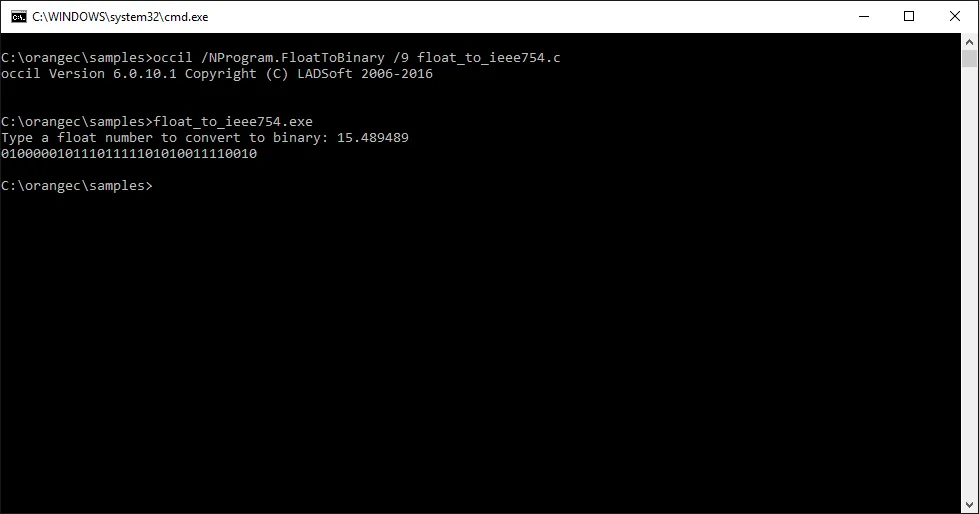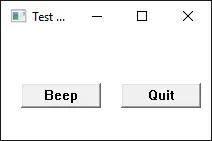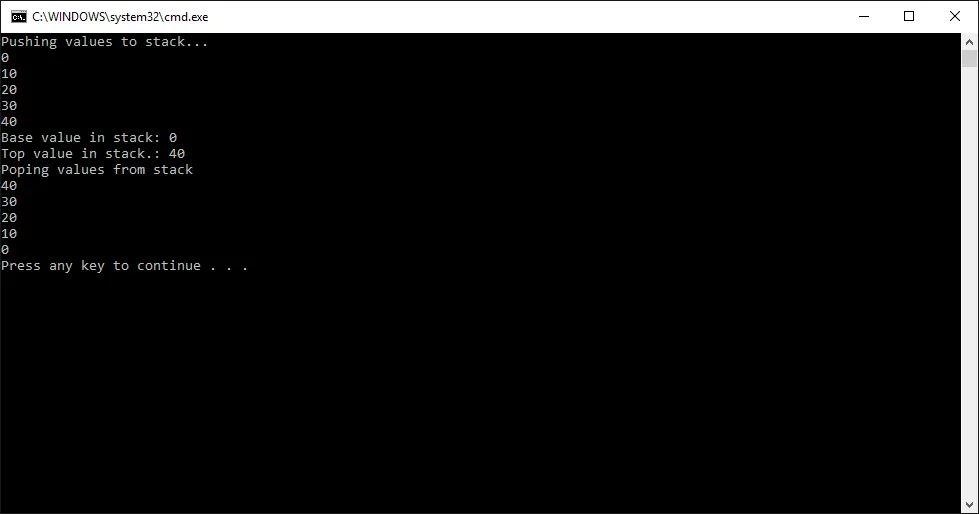英文原文:Compiling your C code to .NET
介绍
通常情况下,对于那些使用C语言编程并开始用C#/ VB 或一些其他的用于 .NET 的编译语言编程,那么他们希望或者甚至是需要调用我们用C语言编写的函数代码。
每当我在互联网上钻研,或说要在编译器中使用 Visual C 与/clr ,或使用pInvoke来调用C语言函数,都有这样的心情。
所以我在和我的朋友,OrangeC / C 编译器的创造者,David 交流的时候,我给他出了个主意,那就是为你的编译器创建一个新的后端来生成 CLR 代码,这样一来,就没有生成 CLR 代码的C语言开源编译器了。
在分离生成 x86 代码的编译器后端后,新的后端的开发在一些修复和实现之后开始了,我们已经成功取得编译器 SQLite3 并使用 DLL 与 C# 代码一起编译。
C / C 编译器和到 MSIL 后端的链接
你可以遵循 OrangeC / C 编译器的开发,或致力于以下链接的项目贡献:
- 官方网站:http://ladsoft.tripod.com/index.html
- GitHub 上的 OrangeC / C 编译器和工具链:https://github.com/LADSoft/OrangeC
- github 上 MSIL 的 OrangeC 后端:https://github.com/LADSoft/Simple-MSIL-Compiler
构建 Orangec 编译器和用于 MSIL 的 Orangec
要构建 MSIL 的 Orange C 编译器,你需要下载 OrangeC 编译器的完整代码,你可以在这里得到源代码:
或者
在你下载源代码后,在C:\orangec 解压所有 zip 文件,在解压所有文件后,你需要下载 MSIL 后端
解压所有文件到文件夹C:\orangec\src\occ,当出现替代选项的时候,接受替代文件。
要构建和生成源代码,必须具备下面其中一个编译器:
- MinGW
- Borland C / C 5.5(我用这个编译器来构建编译程序)
- CLang
- Visual C / C 10
- OrangeC 编译器
在下载和解压所有文件后,打开CMD导航到文件夹C:\orangec\src,type,config.bat,在执行 config.bat,type 后:
- omake fullbuild
这将建立所有的 orangec 编译器。
构建后,也许你会看到一个关于创建 zip 文件的错误,但是不要担心。
好了,现在你已经编译好了所有的 OrangeC / C 工具链,为了构建后端到 MSIL,你需要去到文件夹C:\orangec\src\occ\netil,在这个文件夹里面,type(在系统路径中具备ILASM 和CSC (C#编译器)编译器时必须的):
- omake netlib.lib
- omake
在执行这一命令后,你就有了 occil.exe
使用 OrangeC 编译器来生成 MSIL 代码
要使用编译器,你只需下载这篇文章中提供的链接,创建文件夹C:\orangec,解压该文件夹中的所有 zip 内容,打开 CMD,然后导航到C:\orangec 文件夹,在 orangec 文件夹中,type,config.bat 后,当运行 config.bat 文件时,一个新的环境变量将在CMD背景下创建,因此编译器可以定位 include 文件夹。
*重点* ——在你的路径中具备 ILASM.EXE 很有必要,为了做到这一点,你有两个办法把 ILASM 放到你的路径中:
- 运行 VSVARS32.BAT
- 在你的 CMD 中执行以下命令:
PATH =C:\Windows\Microsoft.NET\Framework\v4.0.30319;%PATH%
在构建生成的 IL 代码到 EXE / DLL 时,在路径中具备 ilasm 是有必要,然而我们正在 OrangeC 中实施 oilasm。
创建一个小例子
创建一个名为“float_to_ieee754.c”的C文件,并把代码放到C文件:
#include <stdio.h> #include <stdlib.h> #include <string.h> char *strrev_t(char *str) { char *p1, *p2; if (!str || !*str) return str; for (p1 = str, p2 = str strlen (str) - 1; p2 > p1; p1, --p2) { *p1 ^= *p2; *p2 ^= *p1; *p1 ^= *p2; } return str; } void floatToBinary (float f, char *str, int numeroDeBits) { int i = 0; int strIndex = 0; union { float f; unsigned int i; }u; u.f = f; memset (str, '0', numeroDeBits); for (i = 0; i < numeroDeBits; i ) { str[strIndex ] = (u.i & (1 << 0)) ? '1' : '0'; u.i >>= 1; } str[strIndex] = '\0'; str = strrev_t(str); } int main () { float input = 0.0; constint numeroDeBits = 32; char *str = (char*) malloc (sizeof(char) * numeroDeBits); printf ("Type a float number to convert to binary: "); scanf ("%f", &input); floatToBinary (input, str, numeroDeBits); printf ("%s\n", str); if(str != NULL) free (str); return0; }
现在,为了构建代码,你需要在 CMD 中键入:
occil /NProgram.FloatToBinary /9 float_to_ieee754.c
每个参数的说明:
/N<NameSpace>.<Class>/9: C99 mode
在执行此命令后,编译器将生成指向你的代码的 IL 代码和 occil 调用 ilasm 来生成来自于 IL 代码的 EXE / DLL。如果你想看到生成的 IL 代码,只要看看你的C代码所在的文件夹,打开“float_to_ieee754.il”。
生成 IL 代码:
//File float_to_ieee754.il //Compiler version MSIL Compiler .corflags 3// 32-bit.assembly float_to_ieee754 { } .assembly extern mscorlib { } .assembly extern lsmsilcrtl { } .namespace'Program' { .classpublicexplicit ansi sealed'FloatToBinary' { .field publicstatic valuetype 'Program.FloatToBinaryøint8[]''L_3' at $L_3 .data $L_3 = bytearray (2573 a 0 ) .field publicstatic valuetype 'Program.FloatToBinaryøint8[]''L_2' at $L_2 .data $L_2 = bytearray (25660 ) .field publicstatic valuetype 'Program.FloatToBinaryøint8[]''L_1' at $L_1 .data $L_1 = bytearray (5479706520612066 6c 6f 617420 6e 75 6d 6265722074 6f 2063 6f 6e 766572742074 6f 206269 6e 617279 3a 200 ) .method public hidebysig static int32 'main'(int32 'argc', void * 'argv') cil managed { // Line 43: int main () .maxstack 3 .locals ( [0] float32 'input/0', [1] void* 'str/1' ) L_4: // Line 45: float input = 0.0; ldloca 'input/0' ldc.r4 0.0 stind.r4 // Line 46: const int numeroDeBits = 32; ldloca 'str/1' ldc.i4 32 conv.u4 call void* [lsmsilcrtl]lsmsilcrtl.rtl::malloc (uint32) stind.i4 // Line 48: printf ("Type a float number to convert to binary: "); ldsflda valuetype 'Program.FloatToBinaryøint8[]' Program.FloatToBinary::L_1 call vararg int32 'printf'(void*, ...) pop // Line 49: scanf ("%f", &input); ldsflda valuetype 'Program.FloatToBinaryøint8[]' Program.FloatToBinary::L_2 ldloca 'input/0' call vararg int32 'scanf'(void*, ..., void*) pop // Line 50: floatToBinary (input, str, numeroDeBits); ldloc 'input/0' ldloc 'str/1' ldc.i4 32 call void Program.FloatToBinary::'floatToBinary'(float32, void*, int32) // Line 51: printf ("%s\n", str); ldsflda valuetype 'Program.FloatToBinaryøint8[]' Program.FloatToBinary::L_3 ldloc 'str/1' call vararg int32 'printf'(void*, ..., void*) pop // Line 52: if (str != NULL) ldloc 'str/1' brfalse 'L_7'// Line 53: free (str); ldloc 'str/1' call void [lsmsilcrtl]lsmsilcrtl.rtl::free (void*) L_7: // Line 54: return 0; ldc.i4 0// Line 55: } L_5: ret } .method public hidebysig staticvoid* 'strrev_t'(void* 'str' ) cil managed { // Line 5: char *strrev_t(char *str) .maxstack 4 .locals ( [0] void* 'p1/0', [1] void* 'p2/1' ) L_17: // Line 7: char *p1, *p2; // Line 9: if (!str || !*str) ldarg 'str' brfalse 'L_37' ldarg 'str' ldind.i1 brtrue 'L_20' L_37: // Line 10: return str; ldarg 'str' br 'L_18' L_20: ldarg 'str' stloc 'p1/0' ldarg 'str' call uint32 'strlen'(void*) ldarg 'str' add ldc.i4 1 sub stloc 'p2/1' br 'L_26' L_25: // Line 12: { // Line 13: *p1 ^= *p2; ldloc 'p1/0' ldloc 'p1/0' ldind.i1 ldloc 'p2/1' ldind.i1 xor stind.i1 // Line 14: *p2 ^= *p1; ldloc 'p2/1' ldloc 'p2/1' ldind.i1 ldloc 'p1/0' ldind.i1 xor stind.i1 // Line 15: *p1 ^= *p2; ldloc 'p1/0' ldloc 'p1/0' ldind.i1 ldloc 'p2/1' ldind.i1 xor stind.i1 L_28: ldloc 'p1/0' ldc.i4 1 add stloc 'p1/0' ldloc 'p2/1' ldc.i4 1 sub stloc 'p2/1'// Line 11: for (p1 = str, p2 = str strlen (str) - 1; p2 > p1; p1, --p2) L_26: ldloc 'p2/1' ldloc 'p1/0' bgt 'L_25' L_27: // Line 16: } ldarg 'str'// Line 18: } L_18: ret } .method public hidebysig staticvoid'floatToBinary'(float32 'f' , void* 'str' , int32 'numeroDeBits' ) cil managed { // Line 20: void floatToBinary (float f, char *str, int numeroDeBits) .maxstack 4 .locals ( [0] int32 'i/0', [1] int32 'strIndex/1', [2] valuetype 'Program.FloatToBinaryø__anontype_2486130647_0''u/2' ) L_41: // Line 22: int i = 0; ldloca 'i/0' ldc.i4 0 stind.i4 // Line 23: int strIndex = 0; ldloca 'strIndex/1' ldc.i4 0 stind.i4 // Line 29: u.f = f; ldloca 'u/2' ldarg 'f' stind.r4 // Line 30: memset (str, '0', numeroDeBits); ldarg 'str' ldc.i4 48 ldarg 'numeroDeBits' conv.u4 call void* 'memset'(void*, int32, uint32) pop // Line 31: ldc.i4 0 stloc 'i/0' br 'L_45' L_44: // Line 33: { // Line 34: str[strIndex ] = (u.i & (1 << 0)) ? '1' : '0'; ldloc 'strIndex/1' ldarg 'str' add ldloc 'strIndex/1' ldc.i4 1 add stloc 'strIndex/1' ldloca 'u/2' ldind.u4 ldc.i4 1 and brfalse 'L_56' ldc.i4 49 br 'L_57' L_56: ldc.i4 48 L_57: conv.i1 stind.i1 // Line 35: u.i >>= 1; ldloca 'u/2' ldloca 'u/2' ldind.u4 ldc.i4 1 shr.un stind.i4 L_47: ldloc 'i/0' ldc.i4 1 add stloc 'i/0'// Line 32: for (i = 0; i < numeroDeBits; i ) L_45: ldloc 'i/0' ldarg 'numeroDeBits' blt 'L_44' L_46: // Line 36: } ldloc 'strIndex/1' ldarg 'str' add ldc.i4 0 stind.i1 // Line 39: ldarg 'str' call void* Program.FloatToBinary::'strrev_t'(void*) starg 'str'// Line 41: } L_42: ret } .field publicstaticvoid *'__stdin' .field publicstaticvoid *'__stdout' .field publicstaticvoid *'__stderr' .field publicstaticvoid *'_pctype' .method private hidebysig staticvoid'$Main'() cil managed { .entrypoint .locals ( [0] int32 'argc', [1] void * 'argv', [2] void * 'environ', [3] void * 'newmode' ) .maxstack 5 call void *'__pctype_func'() stsfld void * Program.FloatToBinary::_pctype call void *'__iob_func'() dup stsfld void * Program.FloatToBinary::__stdin dup ldc.i4 32 add stsfld void * Program.FloatToBinary::__stdout ldc.i4 64 add stsfld void * Program.FloatToBinary::__stderr ldloca 'argc' ldloca 'argv' ldloca 'environ' ldc.i4 0 ldloca 'newmode' call void __getmainargs (void *, void *, void *, int32, void *); ldloc 'argc' ldloc 'argv' call int32 Program.FloatToBinary::main (int32, void *) call void exit (int32) ret } .class nested private value explicit ansi sealed'int8[]' {.pack 1 .size 1} .class nested public value explicit auto sequential ansi sealed'__anontype_2486130647_0' {.pack 4 .size 4} .class nested public value explicit auto sequential ansi sealed'int32[2]' {.pack 1 .size 8 } .classenum nested public auto ansi sealed'orient' { .field publicstatic literal valuetype Program.FloatToBinary/orient __or_unspecified = int32(0) .field publicstatic literal valuetype Program.FloatToBinary/orient __or_narrow = int32(1) .field publicstatic literal valuetype Program.FloatToBinary/orient __or_wide = int32(2) .field public specialname rtspecialname int32 value__ } } } .method private hidebysig staticvoid * __GetErrno () cil managed { .maxstack 1 call void * '_errno'() ret } .method public hidebysig static pinvokeimpl ("msvcrt.dll" cdecl) void* 'memset'(void*, int32, uint32) preservesig {} .method public hidebysig static pinvokeimpl (".dll" cdecl) uint32 'strlen'(void*) preservesig {} .method public hidebysig static pinvokeimpl ("msvcrt.dll" cdecl) vararg int32 'scanf'(void*) preservesig {} .method public hidebysig static pinvokeimpl ("msvcrt.dll" cdecl) void'exit'(int32) preservesig {} .method public hidebysig static pinvokeimpl ("msvcrt.dll" cdecl) vararg int32 'printf'(void*) preservesig {} .method public hidebysig static pinvokeimpl ("msvcrt.dll" cdecl) void'__getmainargs'(void*, void*, void*, int32, void*) preservesig {} .method public hidebysig static pinvokeimpl ("msvcrt.dll" cdecl) void* '__pctype_func'() preservesig {} .method public hidebysig static pinvokeimpl ("msvcrt.dll" cdecl) void* '_errno'() preservesig {} .method public hidebysig static pinvokeimpl ("msvcrt.dll" cdecl) void* '__iob_func'() preservesig {}
为了执行生成的 EXE / DLL,有两个可执行的 DLL 很有必要,这样你可以在C:\orangec\bin\中得到这两个 DLL,你只要复制 DLL 到相同 EXE 文件夹,并执行生成的 EXE。

构建一个简单的 GUI 应用程序
编译器还不支持所有创建有 Windows GUI 的复杂程序,但可以编译简单程序,在这个例子中,让我们创建一个简单的窗口。
*注*:为了编译代码来使用图形界面,此时我们仍然需要声明主要部分。
在这个简单的示例中,我们创建了一个C文件,叫做:window.c
#include <windows.h> #include <stdio.h> constchar g_szClassName[] = "WindowClass"; void createButtons (HWND hwnd) { CreateWindow ("button", "Beep", WS_VISIBLE | WS_CHILD, 20, 50, 80, 25, hwnd, (HMENU)1, NULL, NULL); CreateWindow ("button", "Quit", WS_VISIBLE | WS_CHILD, 120, 50, 80, 25, hwnd, (HMENU)2, NULL, NULL); } LRESULT CALLBACK WndProc (HWND hwnd, UINT msg, WPARAM wParam, LPARAM lParam) { switch (msg) { case WM_CREATE: createButtons (hwnd); break; case WM_COMMAND: { if (LOWORD (wParam) == 1) Beep (40, 50); if (LOWORD (wParam) == 2) { MessageBox (hwnd, "Goodbye, cruel world!", "Note", MB_OK); PostQuitMessage (0); } break; } case WM_CLOSE: DestroyWindow (hwnd); break; case WM_DESTROY: PostQuitMessage (0); break; default: return DefWindowProc (hwnd, msg, wParam, lParam); } return0; } int WINAPI WinMain (HINSTANCE hInstance, HINSTANCE hPrevInstance, LPSTR lpCmdLine, int nCmdShow) { WNDCLASSEX wc; HWND hwnd; MSG Msg; wc.cbSize = sizeof(WNDCLASSEX); wc.style = 0; wc.lpfnWndProc = WndProc; wc.cbClsExtra = 0; wc.cbWndExtra = 0; wc.hInstance = hInstance; wc.hIcon = LoadIcon (NULL, IDI_APPLICATION); wc.hCursor = LoadCursor (NULL, IDC_ARROW); wc.hbrBackground = (HBRUSH)(COLOR_WINDOW 1); wc.lpszMenuName = NULL; wc.lpszClassName = g_szClassName; wc.hIconSm = LoadIcon (NULL, IDI_APPLICATION); if (!RegisterClassEx (&wc)) { MessageBox (NULL, "Window Registration Failed!", "Error!", MB_ICONEXCLAMATION | MB_OK); return0; } hwnd = CreateWindowExA ( WS_EX_CLIENTEDGE, g_szClassName, "Test window in .Net!! :) ", WS_OVERLAPPEDWINDOW, CW_USEDEFAULT, CW_USEDEFAULT, 230, 150, NULL, NULL, hInstance, NULL); if (hwnd == NULL) { MessageBox (NULL, "Window Creation Failed!", "Error!", MB_ICONEXCLAMATION | MB_OK); return0; } ShowWindow (hwnd, nCmdShow); UpdateWindow (hwnd); while (GetMessage (&Msg, NULL, 0, 0) > 0) { TranslateMessage (&Msg); DispatchMessage (&Msg); } return Msg.wParam; } int main (int argc, char* argv[]) { STARTUPINFOA si; GetStartupInfoA (&si); int ret = WinMain (GetModuleHandleA (NULL), NULL, "", (si.dwFlags & 1) ? si.wShowWindow : 10); return ret; }
要生成这个源代码,报告编译器 libs. 在源中使用了什么是必要的,因此,在命令行中生成源代码是这样的:
occil /Lkernel32 /Luser32 /9 window.c
生成之后,我们就可以执行应用程序: )

在 C# 中创建并使用来自于C语言代码的 DLL
现在我们知道如何从C语言代码创建一个 .NET EXE。下面让我们从C语言代码创建一个 DLL,并和你的 C# 代码一起使用它。
用C语言创建一个简单的堆栈,为此,创建一个名为“stack.c”的C文件,并在文件中插入下面的代码:
#include <stdio.h> #include <stdlib.h> typedef struct _stack_ { int size; int totalitems; int* stack; } stack; stack* pl_initastack (int size); void pl_push (stack* pl, int elemento, int* success); int pl_pop (stack* pl, int* success); int pl_top (stack *pl, int* success); int pl_base (stack* pl, int *success); int pl_stackfull (stack* pl); int pl_stackempty (stack* pl); void pl_freestack (stack *pl); void pl_cleanstack (stack *pl); stack* pl_initastack (int size) { stack* pl = (stack*) malloc (sizeof(stack)); pl->stack = (int*) malloc (sizeof(int) * size); pl->size = size; pl->totalitems = 0; return pl; } void pl_push (stack* pl, int elemento, int* success) { if (!pl_stackfull (pl)) pl->stack[pl->totalitems ] = elemento; else *success = 0; } int pl_pop (stack* pl, int* success) { if (!pl_stackempty (pl)) { *success = 1; return pl->stack[--pl->totalitems]; } else { *success = 0; return -1; } } int pl_top (stack *pl, int* success) { if (pl_stackempty (pl)) { *success = 0; return -1; } else { *success = 1; return pl->stack[pl->totalitems - 1]; } } int pl_base (stack* pl, int *success) { if (pl_stackempty (pl)) { *success = 0; return -1; } else { *success = 1; return pl->stack[0]; } } int pl_stackfull (stack* pl) { return pl->totalitems >= pl->size; } int pl_stackempty (stack* pl) { return pl->totalitems == 0; } void pl_freestack (stack* pl) { free (pl->stack); free (pl); } void pl_cleanstack (stack *pl) { pl->stack = malloc (sizeof(int) * pl->size); pl->totalitems = 0; }
现在,你需要用选项/Wd 生成这个源代码。这将告诉编译器你想要生成一个 DLL,所以为了建立这个文件,我们使用这个命令行:
occil /ostackdll.il /c /Wd /9 /NStackLib.Stack stack.c
建立 stack.c 后,让我们构建生成的 IL 代码到 DLL:
ilasm /DLL stackdll.il
现在,让我们创建 C# 项目。在这篇文章中,我创建了一个 .NET 4.0 的 C# 项目。
对此,你可以使用 OCC 生成的 DLL,你需要在 C# 项目中做一些设置:
- Enable Unsafe code
- Plataform target: x86
在设置这些选项后,在引用中添加 stack.dll,并写代码来使用 DLL,在这种情况下,我写了这个简单的示例程序:
using System; namespace Stack { unsafeclass Program { staticvoid Main (string[] args) { void* stk = null; stk = StackLib.Stack.pl_initastack (5); int success = 1; Console.WriteLine ("Pushing values to stack..."); for(int i=0; (success == 1); i ) { int val = i * 10; StackLib.Stack.pl_push (stk, val, &success); } Console.WriteLine ("Base value in stack: {0}", StackLib.Stack.pl_base (stk, &success)); Console.WriteLine ("Top value in stack.: {0}", StackLib.Stack.pl_top (stk, &success)); Console.WriteLine ("Poping values from stack"); while(true) { int val = StackLib.Stack.pl_pop (stk, &success); if (success == 0) break; Console.WriteLine ("{0}", val); } StackLib.Stack.pl_freestack (stk); stk = null; } } }
在你构建 EXE 后,不要忘了复制在 orangec 文件夹的 BIN 文件夹中的两个 DLL。

使用 SQLite
现在我们知道如何在C语言中创建并使用来自于源代码的 DLL,让我们使用 SQLite!
你可以在文件夹 \samples\sqlite3中找到 SQLite 源代码。
要构建 SQLite 源代码,有必要使用此命令行:
occil /9 /Wd /Lkernel32 sqlite3.c /Nsqlite3.sqlite
在建立 SQLite 后,创建一个 C# 或任何其他 .NET 项目,随你选择,在项目中添加 SQLite 的编译 DLL 的引用,设置项目类型为 x86 以及在必要时启用不安全模式,在我的情况中,我创建了一个简单的 C# 项目,并随便弄了个小程序来使用 SQLite:
using System; using System.IO; using sqlite3; using lsmsilcrtl; namespace sqliteil { unsafeclass Program { staticstring[] Names { get; } = newstring[] { "Bob", "Tom", "Carlos", "Marcos", "Alexandre", "Alex", "Morgana", "Maria", "Jose", "Joao", "Marcos", "Gustavo", "Roberto", "Rodrigo", "Teste" }; staticint Main (string[] args) { String dbName = "dbtest.db"; if (File.Exists (dbName)) File.Delete (dbName); void* db; // Create the databaseint rc = sqlite.sqlite3_open (CString.ToPointer (dbName), &db); if (rc != 0) { Console.WriteLine ("Fail to create the database : ("); return -1; } // Create the tablevoid* stmt; sqlite3.sqlite.sqlite3_prepare_v2(db, CString.ToPointer ("CREATE TABLE IF NOT EXISTS demo (name TEXT, age INTEGER);"), -1, &stmt, null); rc = sqlite.sqlite3_step (stmt); if (rc != 101) { Console.WriteLine ("Fail to create the table : ("); return -1; } sqlite.sqlite3_finalize (stmt); // Insert some data in tableforeach (var name in Names) { var insertLine = String.Format ("insert into demo (name, age) values ('{0}', {1});", name, new Random () .Next (1, 99)); var query = CString.ToPointer (insertLine); sqlite.sqlite3_prepare_v2(db, query, insertLine.Length, &stmt, null); rc = sqlite.sqlite3_step (stmt); if (rc != 101) { Console.WriteLine ("Fail to insert the name: {0}", name); } sqlite.sqlite3_finalize (stmt); } // Read the inserted data...varselect = "SELECT * FROM demo;"; rc = sqlite.sqlite3_prepare_v2(db, CString.ToPointer (select), select.Length, &stmt, null); if(rc == 0) { bool done = false; while(!done) { switch(rc = sqlite.sqlite3_step (stmt)) { case5: case101: done = true; break; case100: { string name = new CString (sqlite.sqlite3_column_text (stmt, 0)) .ToString (); int age = sqlite.sqlite3_column_int (stmt, 1); Console.WriteLine ("Name: {0} -- Age: {1}", name, age); rc = 0; } break; default: done = true; break; } } } sqlite.sqlite3_close (db); return0; } } }
该项目在 SQLite 测试文件夹内。
-
译文链接:http://www.codeceo.com/article/compiling-c-code-to-dotnet.html
翻译作者:码农网 – 小峰
